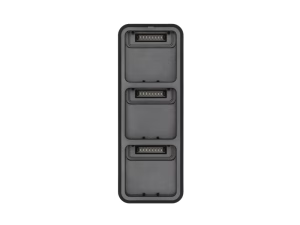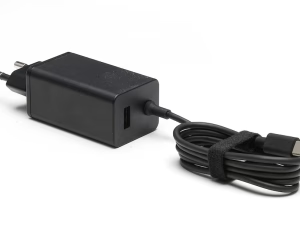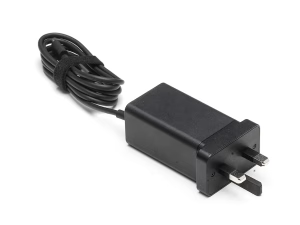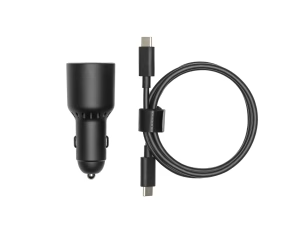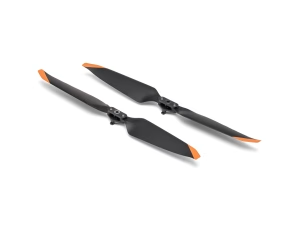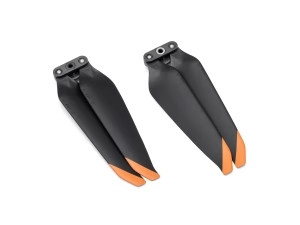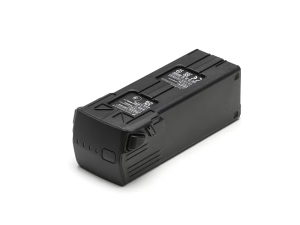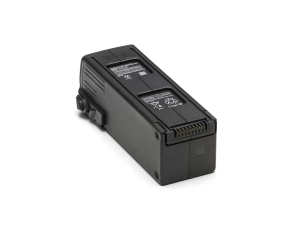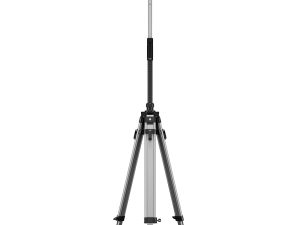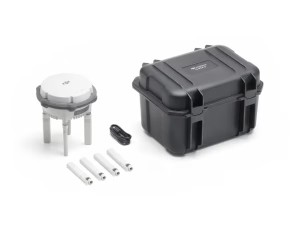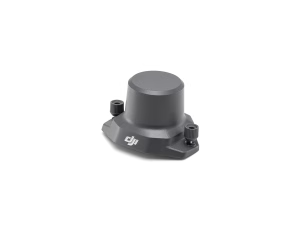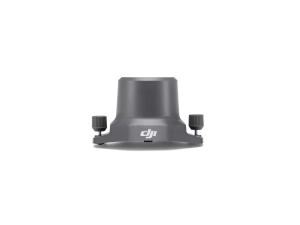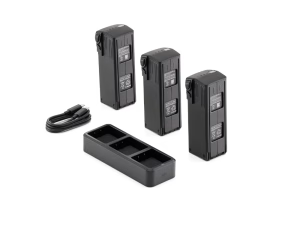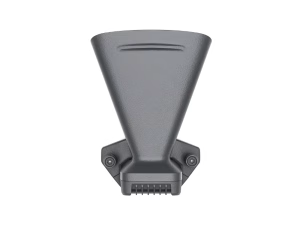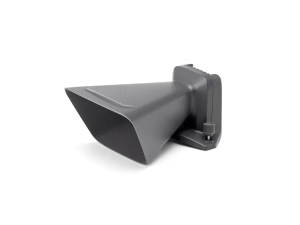DJI Mavic 3 Multispectral
£3,926.00
- Realtime NDVI
- 4x 5MP spectral bands
- 20MP RGB camera
- Realtime terrain-follow
- RTK with centimetre-level accuracy
- DJI SmartFarms software
DJI Mavic 3 Multispectral (M3M)
See beyond visible light. The M3M pairs an RGB camera with a four-band multispectral system to reveal crop status with clarity — backed by a sunlight sensor and RTK for dependable, repeatable mapping.
Multispectral: G / R / RE / NIR (4×5 MP)
RTK cm-level positioning
Up to 43 min flight
Portable & foldable
Compact & Portable
Folds down for easy storage and transport. Ideal for rapid deployment across multiple fields in a single day.
- Set up in minutes; no tools required
- Fits easily in a pickup, van, or farm 4×4
- Lightweight kit for single-operator workflows
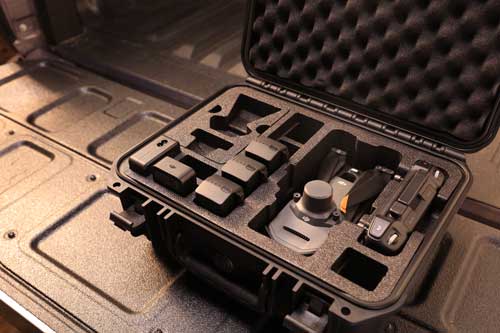
Safe & Stable
Omnidirectional obstacle sensing helps avoid hazards, while robust image transmission supports smooth, reliable flights.
- 360° vision sensing with active avoidance
- Terrain follow helps maintain consistent AGL
- Strong control link for responsive flights
Precise Positioning
Centimetre-level RTK with microsecond-level time synchronisation tags each capture accurately for high-precision surveys.
- RTK/NTRIP support for cm-level geotagging
- Trigger events synced to imaging centre
- Repeatable line work across seasons
RTK for Survey-Grade Precision
The RTK module synchronises with flight control and camera triggers at the microsecond level, so each image is geotagged precisely at the imaging centre.
This supports high-precision mapping workflows and can reduce reliance on ground control points.
- Use check points to validate results
- Mechanical-shutter RGB reduces motion blur
- Optimised for Terra/SmartFarm processing
Up to 43 Minutes
Long endurance supports larger blocks per mission. Real-world time varies with wind, overlap and speed.
- Plan longer legs with fewer battery swaps
- Set sensible reserves for return and landing


Fast Turnarounds
Use the 100 W Battery Charging Hub for high-efficiency charging, plus 88 W aircraft charging when needed.
- Cycle multiple batteries to keep missions moving
- Top up on site from inverter or mains
Coverage
Plan for up to ~200 hectares per flight (typical survey conditions), then validate against your rates and overlaps.
- Dial in altitude/overlap for target GSD
- Use consistent lanes for repeat surveys

Stable Link & Omnidirectional Sensing
O3 Transmission
Two transmit and four receive antennas provide a robust connection for smooth live view and control. Lab-rated long-range figures are for ideal conditions; always maintain VLOS and follow UK CAA rules.
- Strong link in typical UK rural environments
- Low-latency FPV for confident flying
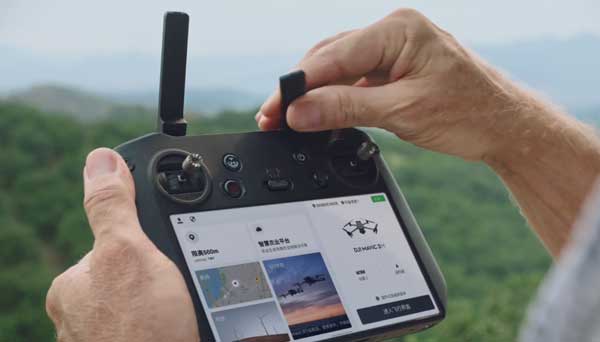

Obstacle Sensing & Terrain-Follow
Wide-FOV vision sensors help detect obstacles in all directions for avoidance. Terrain-follow surveying supports work over rolling or sloped ground.
- Assisted avoidance around trees & poles
- More consistent altitude over varied terrain
Orchard MappingPerform terrain-follow surveys in sloped orchards. With DJI Terra or DJI SmartFarm Web you can reconstruct high-resolution maps, identify tree counts, separate trees from obstacles, and generate 3D operation routes for agricultural drones. |
Guide Variable-Rate ApplicationsCapture multispectral imagery for rice, cotton or potato programmes. Create NDVI/NDRE maps in DJI Terra or SmartFarm Web, then generate prescription maps to drive variable-rate spraying or spreading — helping reduce inputs, lift yield and lower environmental impact. |
Intelligent Field ScoutingAutomate scouting and sync imagery to DJI SmartFarm Web over 4G for live analysis, including tasks like cotton seedling identification or rice production testing. One person can manage large acreages with real-time insights. |
Environmental Monitoring
Capture consistent datasets for environmental audits and long-term stewardship. Generate GIS-ready layers that support planning,
compliance, and practical field decisions.
- Water & enrichment checks: Monitor irrigation ponds, runoff areas, and algae risk zones.
- Forestry & canopy health: Track vigour, leaf-on/leaf-off change, and storm or pest damage.
- Hedgerows & riparian buffers: Map linear features for stewardship schemes and habitat corridors.
- Urban green space audits: Assess tree cover, turf condition, and heat-island mitigation areas.
- Repeatable surveys: RTK geotagging enables like-for-like comparisons across seasons.
- GIS integration: Export orthos/indices to GeoTIFF/shape formats for your mapping stack.
Open Ecosystem
Connect data and controls to the tools you already use. Build dashboards, automate handovers, and streamline field-to-office workflows.
Cloud API
Use DJI Pilot 2’s built-in Cloud API (MQTT) to integrate live operations with third-party platforms—without writing a separate flight app.
- Live ops: Stream telemetry, location, and media to web dashboards.
- Automation hooks: Trigger alerts, jobs, or data pipelines as flights progress.
- Centralised fleets: Aggregate aircraft status and flight records across sites.
- Security controls: Manage access via account-based authentication and roles.
- Flexible back-ends: Connect to cloud services or your own on-prem endpoints.
MSDK (Mobile SDK 5)
Build tailored mobile apps for patrols, mapping, and data capture—with sample projects to accelerate development.
- Flight control: Access mission planning, waypoints, and camera triggers.
- Payload & gimbal: Adjust capture modes and angles from your UI.
- RTK & metadata: Work with precise geotags and capture events for processing.
- Extensible workflows: Pipe outputs into farm management or GIS apps.
- Open examples: Start from reference code to shorten time-to-value.
Speak to Drone Sales UK about bundles, training and UK-focused support.
Notes: Range/coverage figures are based on ideal test conditions. Always maintain VLOS and follow UK CAA rules and local site permissions.
What is the Mavic 3 Multispectral and who is it for?›
The Mavic 3 Multispectral (M3M) is a foldable mapping drone with a 20 MP RGB camera and four multispectral bands (Green, Red, Red‑Edge, NIR). It’s designed for farmers, agronomists, researchers and land‑managers who need crop‑health maps, scouting and survey‑grade imagery.
What can I actually do with it on a UK farm?›
Common tasks include spotting nutrition or water stress, detecting pest/disease hotspots, measuring emergence and canopy cover, planning variable‑rate inputs, tree‑counting in orchards/vineyards, and verifying trial plots.
Which vegetation indices can I create (NDVI, NDRE, GNDVI)?›
You can produce the popular indices — NDVI (general vigour), NDRE (chlorophyll in denser canopies), and GNDVI (sensitive to nitrogen/water) — as well as custom band math. The choice depends on crop stage and what you’re diagnosing.
Do I need a reflectance panel if the drone has a sunlight sensor?›
The built‑in sunlight sensor improves consistency across changing light. A calibrated reflectance panel is still recommended for research‑grade or cross‑season comparisons where absolute reflectance accuracy matters.
How much can I map per battery and how long does a flight last?›
You can expect up to ~40 minutes airborne in typical mapping (rated up to 43 min in still air). Real coverage depends on height, overlap, wind and turns. Carry multiple batteries for continuous work. :contentReference[oaicite:1]{index=1}
What altitude and overlap should I use for crop mapping?›
Start at 80‑120 m AGL with 70‑80% front/side overlap. Increase overlap in windy conditions, for tall crops, or when chasing finer ground‑sampling distance (GSD).
How does RTK work and do I need internet in the field?›
RTK provides centimetre‑level positioning by applying corrections to the GNSS solution. You can get corrections from an NTRIP service (requires mobile data) or your own local base station (no internet required). Without RTK you can still map, but accuracy and repeatability are lower. :contentReference[oaicite:2]{index=2}
Do I still need ground control points (GCPs)?›
Many ag‑workflows are fine with RTK only. Use GCPs (or at least check‑points) when you need survey‑grade accuracy, are working under tree cover/poor GNSS conditions, or when specifications demand them.
What does “CE up to 8 km” range actually mean?›
It’s a lab rating for the control/video link in ideal line‑of‑sight conditions. In the UK you must maintain visual line of sight (VLOS), which typically limits practical distances to a few hundred metres depending on aircraft visibility and observers.
Can I fly in wind, drizzle or cold weather?›
The aircraft is not rated for rain or heavy mist — avoid precipitation to protect sensors and data quality. It handles moderate winds; reduce speed and increase overlap when it’s gusty. Works in typical UK winter/summer temps — keep batteries warm before flight in cold. :contentReference[oaicite:3]{index=3}
Is it safe to fly near livestock?›
Yes — with caution. Keep altitude/separation to avoid disturbance, especially during lambing/calving. Follow landowner instructions and welfare guidelines.
What data formats do I get and can my agronomy software read them?›
Typical outputs are geotagged RGB photos, multispectral TIFFs, orthomosaics and index rasters (e.g. GeoTIFF). Most agronomy/GIS tools (and variable‑rate platforms) accept these or their exports (e.g. shapefiles, prescriptions).
Which software should I use — DJI Terra, SmartFarm or third‑party?›
DJI Terra/SmartFarm provide straightforward workflows for indices and farm management. Many teams also use third‑party photogrammetry and GIS when they need extra control or specific analytics. Choose based on your reporting and prescription needs.
How do I turn maps into variable‑rate prescriptions?›
Process flights into NDVI/NDRE, classify into zones, and export a prescription file (rate‑map). These can be used by spreaders/sprayers or to drive drone applications in compatible ecosystems.
Will it automatically detect disease or weeds?›
Multispectral highlights plant‑stress but doesn’t label the cause. Identification requires agronomic expertise and/or trained models. Use the maps to direct ground checks and confirm diagnoses.
Do I need to calibrate the cameras?›
Routine field‑work relies on the onboard sync and sunlight sensor. For research‑grade reflectance, use a panel and consistent capture procedures (panel images at start/end, steady altitude, constant speed).
Does it work in orchards and on sloped ground?›
Yes. Plan terrain‑follow missions and adjust speed/overlap for canopy height and slope. Obstacles and tree rows may reduce GNSS and add occlusion—consider extra overlap and careful line planning.
Do I need internet in the field to fly?›
No. You can fly and record data offline. Internet is only required for NTRIP RTK corrections, syncing to cloud tools or downloading maps. You can also use a local RTK base without mobile data.
How many batteries do I need and how do I charge on farm?›
Two to four batteries keep a single aircraft working most of the day. Use the charging hub and a suitable inverter/generator or mains power. Avoid deep discharges, store partially charged for longer breaks, and keep contacts clean/dry.
What routine maintenance is required?›
Keep lenses/sensors clean, check props for nicks, ensure firmware is current, and review logs for errors. Protect the gimbal in transport and avoid leaving batteries fully charged for long periods.
What permissions or training do I need in the UK?›
Most field surveys can fit within the Open category depending on class‑marking and separation; otherwise operate in the Specific category with the appropriate training and an Operational Authorisation. Always check the latest CAA guidance and carry suitable insurance for commercial work.
Can I map my neighbour’s field from my boundary?›
Get landowner permission, respect privacy, and follow airspace/flight rules. Good neighbour policy: inform nearby farmers before flights, especially near livestock or public rights of way.
How quickly can I go from flight to a usable map?›
Simple index maps from small fields can be processed the same day. Larger blocks and full orthomosaics take longer depending on PC specs and overlap. Batch overnight when processing many fields.
Can the M3M work alongside spraying/spreading drones?›
Yes. Use multispectral surveys to create prescription maps and zone boundaries. Those outputs can inform variable‑rate drone jobs where supported by your ecosystem.
What memory cards should I use?›
Use high‑quality UHS‑I V30 (or better) microSD cards from reputable brands. Keep spares, and format in‑device before important jobs.
Any tips for getting clean, consistent maps?›
Fly midday with stable light, keep altitude/ground speed steady, maintain recommended overlap, and avoid dust/moisture on lenses. Use the same workflow each time to make fields comparable across dates.
Do you provide setup, training and support?›
Yes — Drone Sales UK can help with setup, field workflows, UK regs guidance, data processing and ongoing support. Ask about on‑farm training and bundles.
What about warranty and repairs?›
Standard manufacturer warranty applies; extended cover plans may be available. Our UK team can advise on turnaround times, spare parts and loan options if required.
How quickly can the drone pay for itself?›
ROI depends on farm size and how often you fly. Users typically regain value through saved inputs (targeted fertiliser/chemicals), reduced scouting time, and earlier intervention leading to yield protection.
Who owns the data?›
You do. If you use cloud services, review their terms on storage and sharing. Many workflows can be run entirely offline if preferred.
1 x DJI Mavic 3 Multispectral Drone
1 x DJI Mavic 3 Intelligent Flight Battery
1x DJI Mavic 3 RTK Module
1 x MicroSD Card
1 x DJI RC Pro Enterprise
1 x Power Cable
1 x USB-C Cable
3 x Propeller (pair)
1 x Charger
1 x USB-C to USB-C Cable
1 x Carrying case
1 x Screwdriver
DJI Mavic 3 Multispectral — Technical Specifications
A compact foldable drone designed for professional agricultural and surveying applications, combining high‑resolution RGB and multispectral imaging with RTK positioning and extended flight performance.
Up to ~43 min flight time
20 MP 4/3″ RGB camera
4× 5 MP multispectral sensors
Folded size: 223×96×122 mm
RTK positioning standard
Aircraft
- Net Weight (with props & RTK): 951 g
- Max Take‑off Weight: 1,050 g
- Dimensions (Folded, w/o props): 223 × 96.3 × 122.2 mm
- Dimensions (Unfolded, w/o props): 347.5 × 283 × 139.6 mm
- Diagonal Length: 380.1 mm
- Max Ascent / Descent: Ascend: 6 m/s (Normal); 8 m/s (Sport) | Descend: 6 m/s (N/S)
- Max Flight Speed (sea level): Normal: 15 m/s | Sport: Forward 21 m/s, Side 20 m/s, Back 19 m/s
- Max Wind Resistance: 12 m/s
- Max Take‑off Altitude: 6,000 m (no payload)
- Max Flight / Hover Time: Up to 43 min (flight) / up to 37 min (hover) — no wind
- Max Flight Distance: 32 km (no wind)
- Pitch / Angular Velocity: 30° (Normal) / 35° (Sport) | Angular velocity: 200°/s
- GNSS: GPS + Galileo + BeiDou + GLONASS (GLONASS only when RTK enabled)
- Hovering Accuracy: Vertical: ±0.1 m (Vision), ±0.5 m (GNSS), ±0.1 m (D‑RTK) | Horizontal: ±0.3 m (Vision), ±0.5 m (HD), ±0.1 m (RTK)
- Operating Temperature: −10 °C to 40 °C
- Light Sensor: Built‑in sunlight sensor
RGB Camera
- Sensor: 4/3″ CMOS, 20 MP effective pixels
- Lens: FOV 84°; 24 mm equivalent; f/2.8–f/11; focus 1 m → ∞
- ISO Range: 100–6400
- Shutter: Mechanical: 8–1/2000 s; Electronic: 8–1/8000 s
- Max Image Size: 5280×3956
- Video: H.264 — 4K 3840×2160 @ 30fps; FHD 1920×1080 @ 30fps; up to 130 Mbps
- Formats: Photos: JPEG / DNG (RAW) | Video: MP4 (H.264) | File system: exFAT
Multispectral Camera
- Sensor: 1/2.8″ CMOS, 5 MP (×4 channels: G/R/RE/NIR)
- Lens: FOV 73.91° (61.2°×48.1°); 25 mm equivalent; f/2.0; fixed focus
- Bands: G 560±16 nm; R 650±16 nm; RE 730±16 nm; NIR 860±26 nm
- Gain / Shutter: Gain 1×–32×; Electronic shutter 1/30–1/12,800 s
- Max Image Size: 2592×1944 (TIFF)
- Video: H.264 MP4 — FHD 1920×1080 @ 30fps; stream up to 60 Mbps (NDVI/GNDVI/NDRE preview)
Gimbal & Sensing
- Stabilisation: 3‑axis mechanical gimbal (tilt/roll/pan); angular vibration ±0.007°
- Gimbal Ranges: Mechanical: Tilt −135° → 45°, Roll −45° → 45°, Pan −27° → 27° | Controllable: Tilt −90° → 35°
- Obstacle Sensing: Omnidirectional binocular vision + bottom IR; forward/back/side/up/down ranges
Video Transmission
- System / Live View: DJI O3 Industry Edition; 1080p @ 30 fps to RC
- Operating Bands: 2.400‑2.4835 GHz; 5.725‑5.850 GHz
- Max Signal Distance (ideal): FCC ~15 km; CE ~8 km; SRRC ~8 km; MIC ~8 km (unobstructed)
- Obstructed (guide): Urban: 1.5‑3 km; Suburban: 3‑6 km (CE); Open fields: 6‑8 km (CE)
- Download / Latency: Up to 15 MB/s (RC Pro Industry); ~200 ms latency
* Range and flight time figures are lab conditions. Always maintain Visual Line Of Sight (VLOS) and comply with UK Civil Aviation Authority rules.
Multispectral + RGB Imaging
The Mavic 3M’s integrated imaging suite combines a 20 MP 4/3″ RGB camera with four dedicated multispectral channels — enabling high-precision surveying, crop monitoring and natural resource assessment.
RGB Camera
20 MP 4/3″ CMOS with a mechanical shutter up to 1/2000 s minimises motion blur during mapping. High-speed bursts down to ~0.7 s keep missions efficient.
Multispectral Bands
Four 5 MP sensors tuned to key vegetation wavelengths:
Green 560 nm ± 16
Red 650 nm ± 16
Red-Edge 730 nm ± 16
NIR 860 nm ± 26
Built-in Sunlight Sensor
A top-mounted irradiance sensor records incident light with each capture. During 2D reconstruction this enables light compensation, improving NDVI accuracy and ensuring consistency across time and changing conditions.
Related Products
-
DJI Mavic 3 Enterprise 100W Battery Charging Hub
£89.00 Buy Now -
DJI 65W Portable Charger
£69.00 Buy Now -
DJI 65W Car Charger
£69.00 Buy Now - Sale!
Propeller Guard for DJI Mavic 3
£30.00Original price was: £30.00.£14.99Current price is: £14.99. Read more -
DJI Mavic 3 Enterprise Propellers
£19.00 Buy Now -
DJI Mavic 3 Battery
£179.00 Buy Now -
D-RTK 3 Multifunctional Station Agri Bundle
£1,329.00 Buy Now -
DJI Mavic 3 Enterprise RTK Module
£570.00 Buy Now -
DJI Mavic 3 Enterprise Battery Kit
£529.00 Buy Now -
DJI Mavic 3 Enterprise Speaker
£150.00 Buy Now










